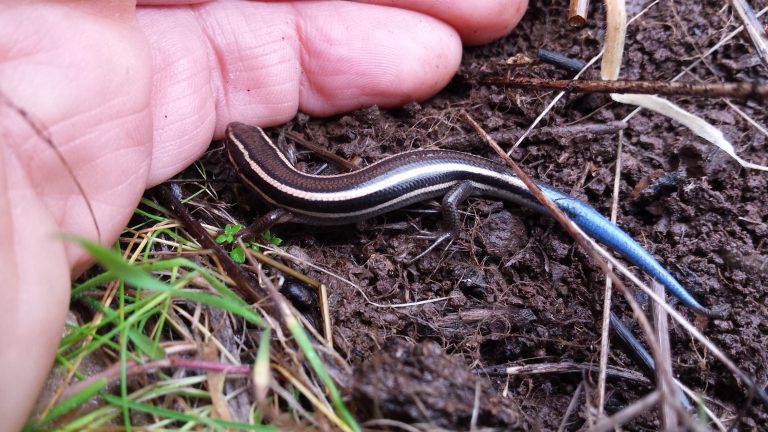Winchester, OR–March 20, 2017. In order to begin some regular, “passive” inventory of herpetiles (primarily) on the Umpqua Community College (UCC) property, I decided to put out some cover boards in four different habitats that I could check now and then to see what had taken refuge. I had prepared some cover pieces, but wanted to look for some good locations and 3 or 4 different habitats in which to place the boards/sheets.

While out looking for cover board sites, I came across three pieces of 12-inch square ceramic tiles that had somehow ended up in one of the grassy areas with Buckbrush (Ceanothus cuneatus). Amazingly, two of these three pieces had a Western Skink under them, and a nearby piece of bark had another! At that point I guessed I would find a few skinks with my cover boards in that area. It was interesting that both of the ceramic tiles with skinks were fairly well embedded in the grassy topsoil and the skinks were underneath in small tunnels. I have since read that skinks will make their own burrows unders such object and do not need to rely on burrowing insects or mammals.

In the photos you can see the bright blue tail of the young skink, and the dull bluish gray tail of the larger individuals. Flowers on the Buckbrush (top featured photo) had not yet burst out.
iNaturalist observations are here.
